Por Ellen Nemitz · ECO - 18 de dezembro de 2024 - Câmara ressuscitou “jabutis” da…
These photos capture the startling effect of shrinking bee populations
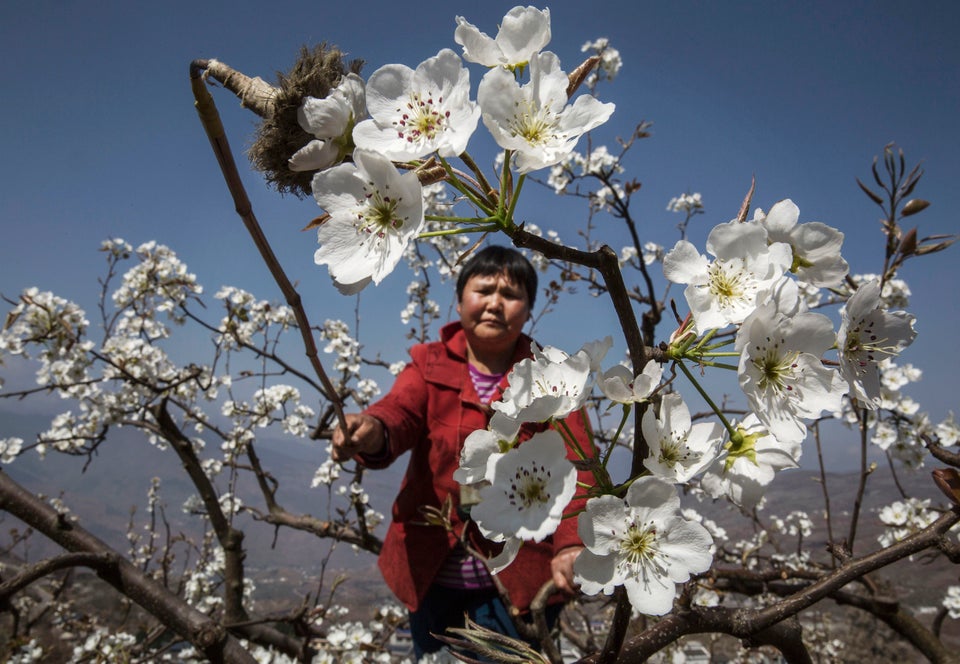
A Chinese farmer pollinates a pear tree by hand in Hanyuan County, Sichuan province, China.
In rural China, humans pollinate flowers by hand.
A Chinese farmer pollinates a pear tree by hand in Hanyuan County, Sichuan province, China.
In parts of rural China, humans are doing the work bees once did.
Striking new photos show farm workers in Hanyuan county, in China’s Sichuan province, painstakingly applying pollen to flowers by hand.
Hanyuan county is known as the “world’s pear capital.” But pesticide use has led to a drastic reduction in the area’s bee population, threatening the fruit crop. Workers now pollinate fruit trees artificially, carefully transferring pollen from male flowers to female flowers to fertilize them.
For photographer Kevin Frayer, the images of human pollinators tell a story of both loss and human creativity.
“On the one hand it’s a story about the human toll on the environment, while on the other it shows our ability to be more efficient in spite of it all,” Frayer told The Huffington Post.
Bee populations are declining worldwide, according to a February report from the United Nations. Shrinking numbers of bees could result in the loss of “hundreds of billions of dollars” worth of crops every year.
But in some parts of China, hand pollination can actually cost less than renting bees to pollinate crops. Farmers in Hanyuan began pollinating by hand because human labor was cheap, Frayer said. But rising labor costs and declining fruit yields are calling the long-term viability of hand pollination into question.
As bees rush toward extinction, Frayer’s photos might portend a not-so-distant future — one in which human ingenuity must replace what human nearsightedness has wiped out.
“It is entirely possible than in our lifetime this practice could become the norm all over the world,” Frayer said.
Fonte – Casey Williams, The Huffington Post de 08 de abril de 2016
Imagens – Kevin Frayer, Getty Images

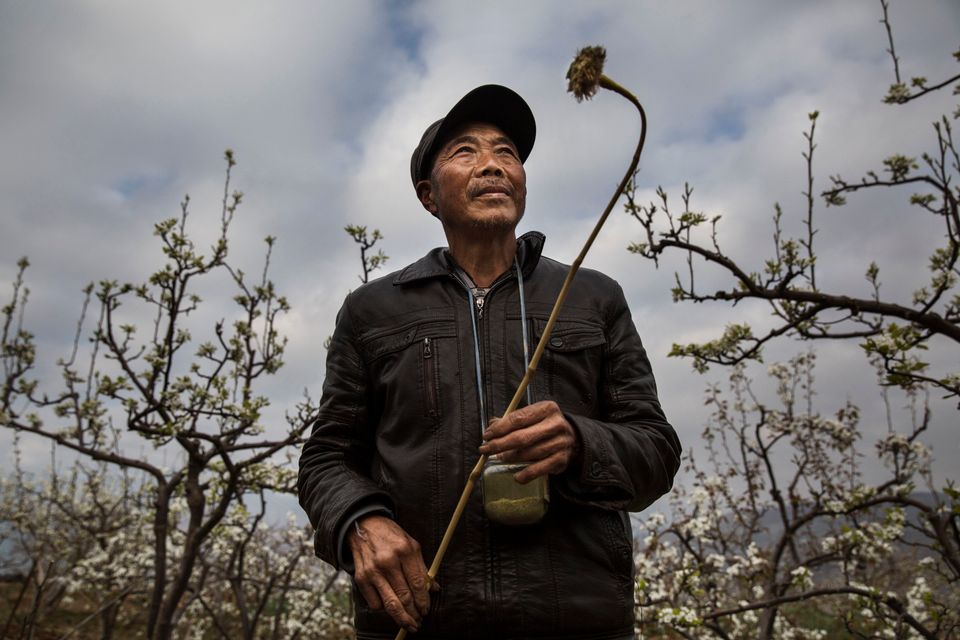
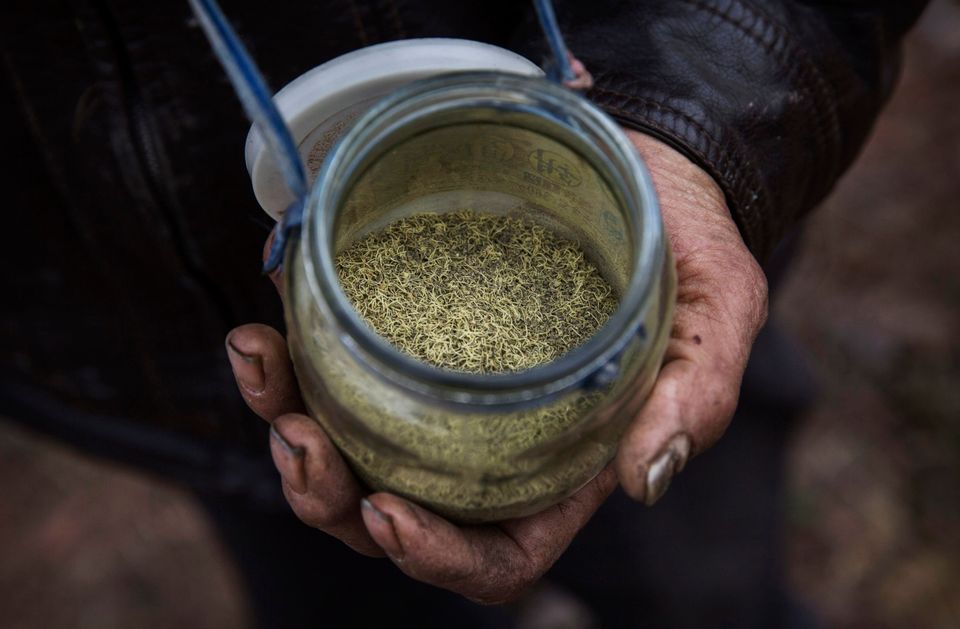
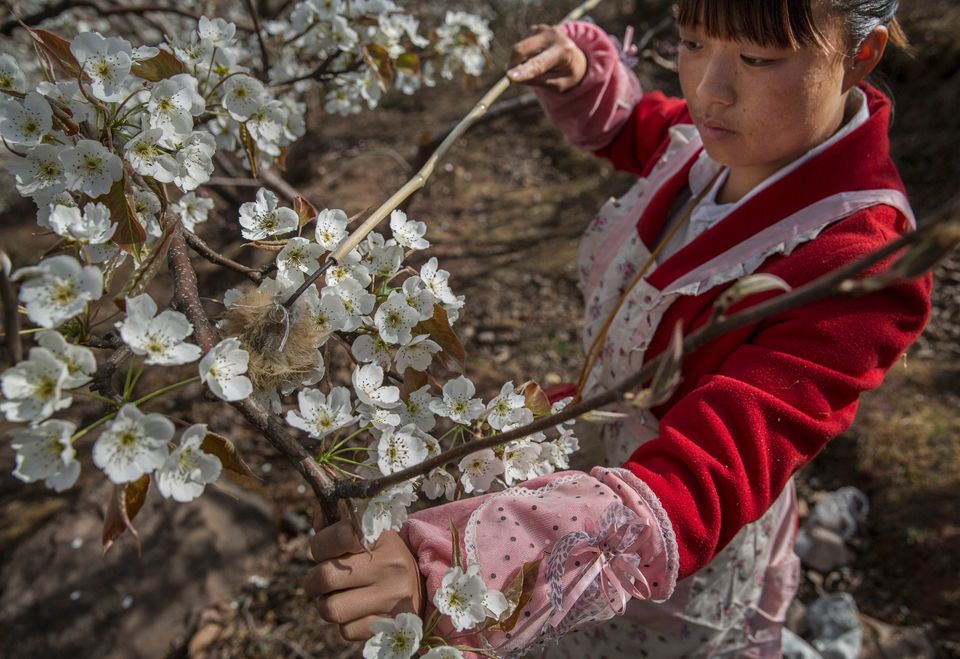
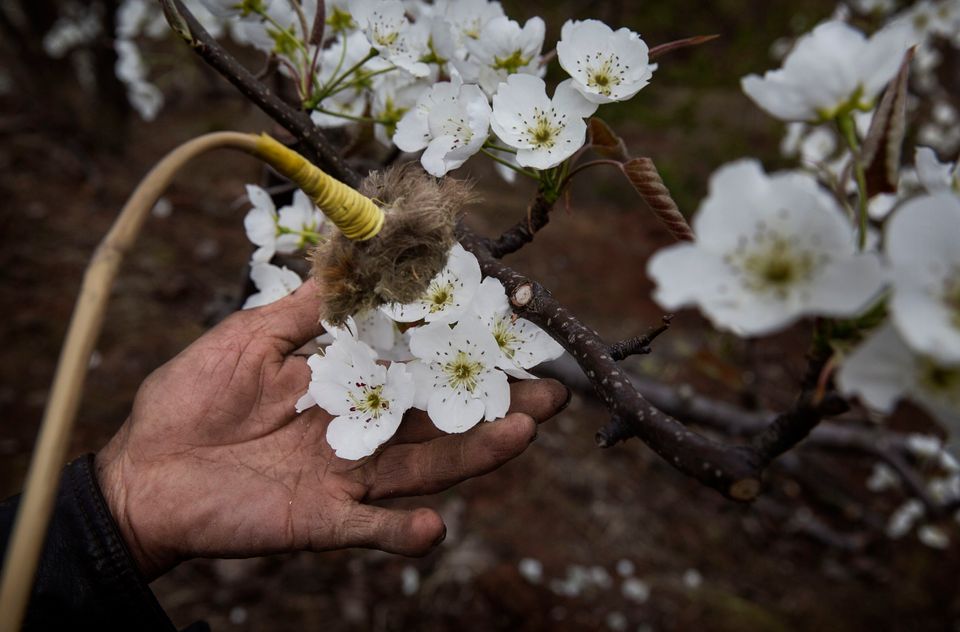
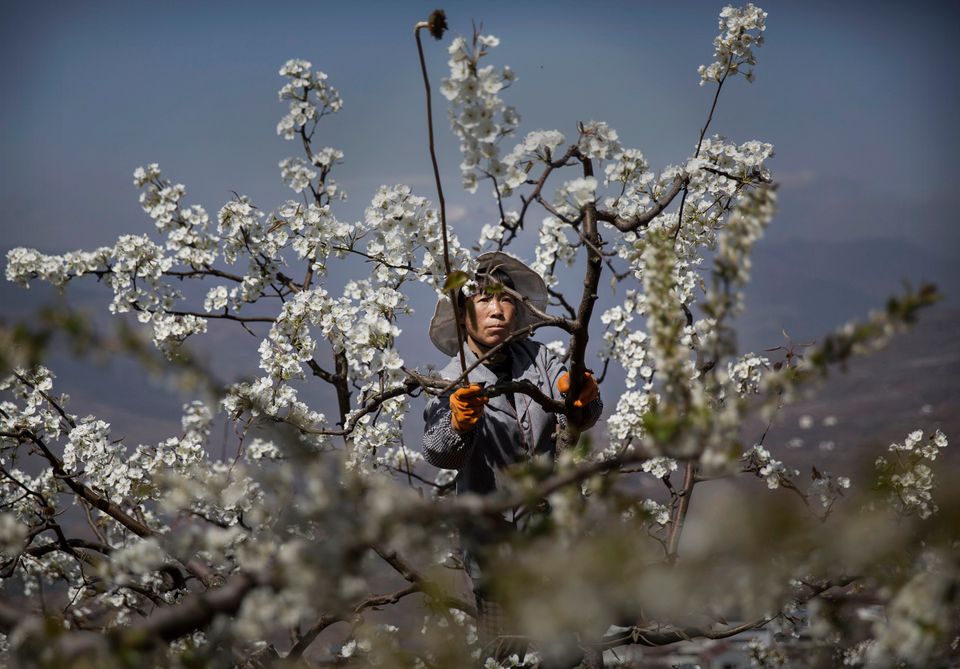
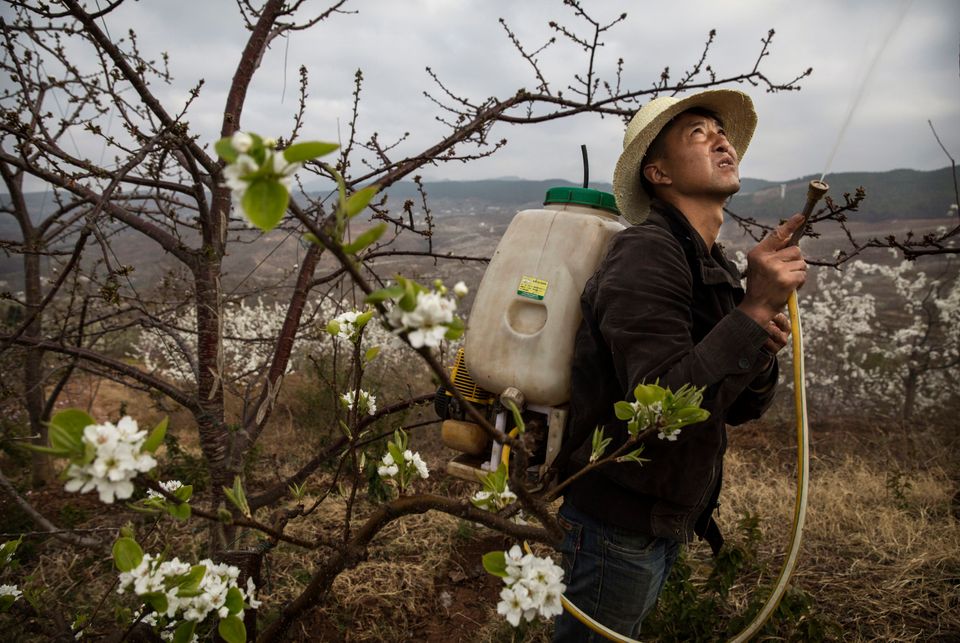
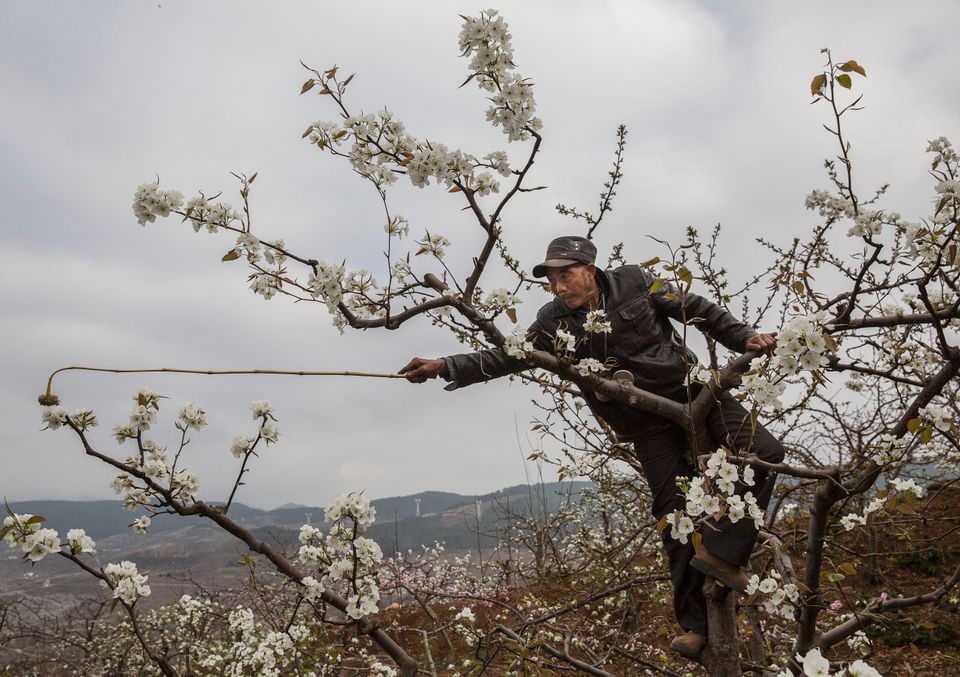
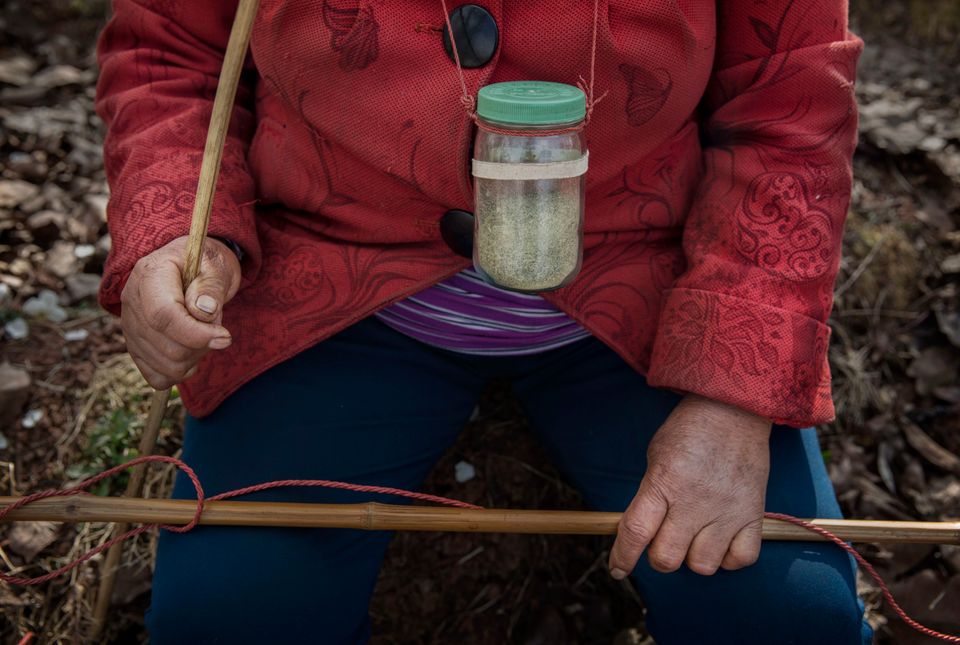
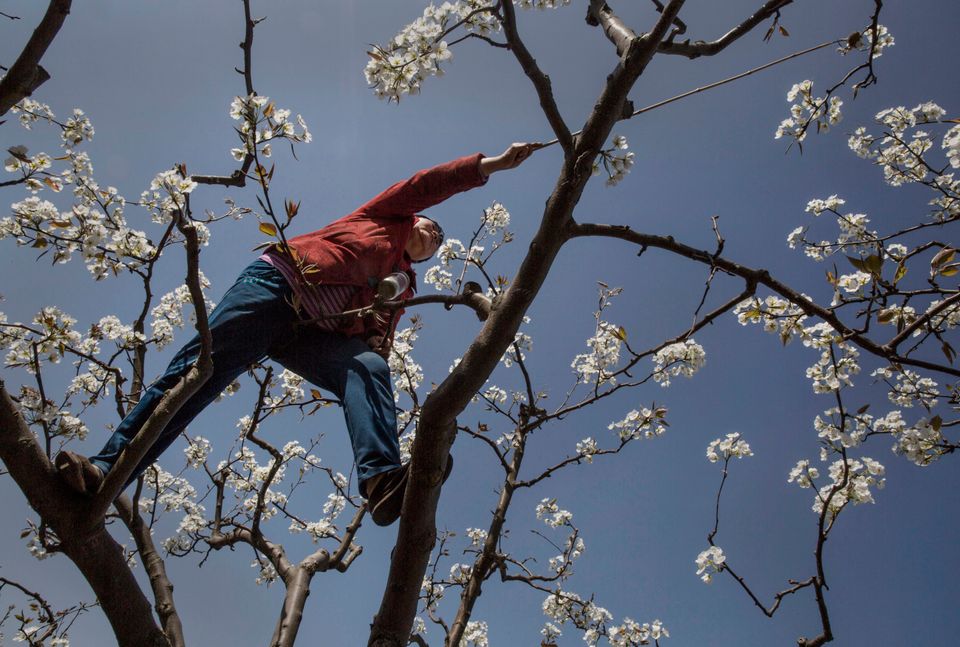
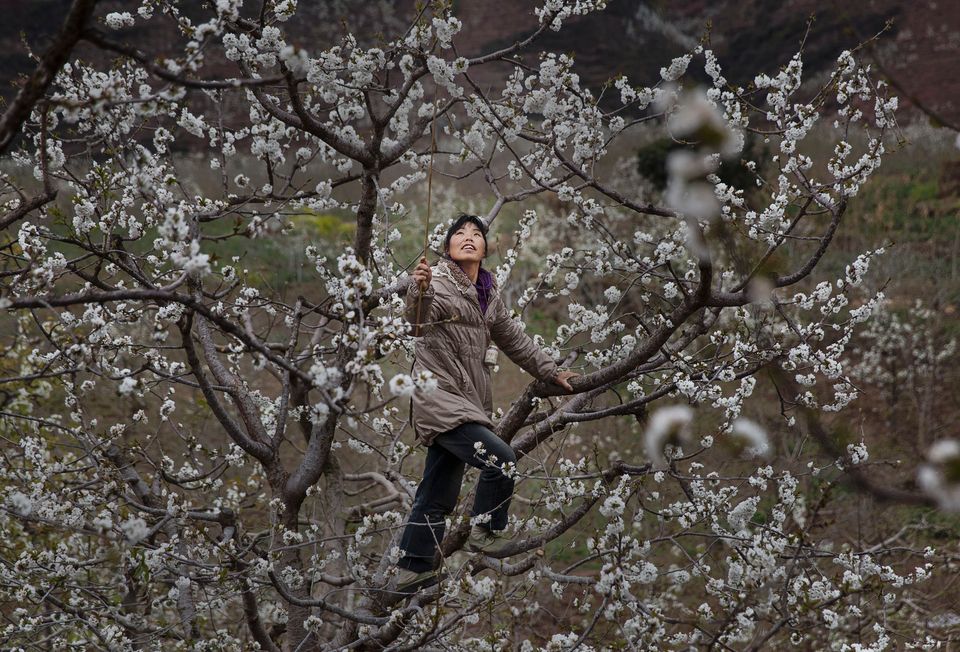



Este Post tem 0 Comentários